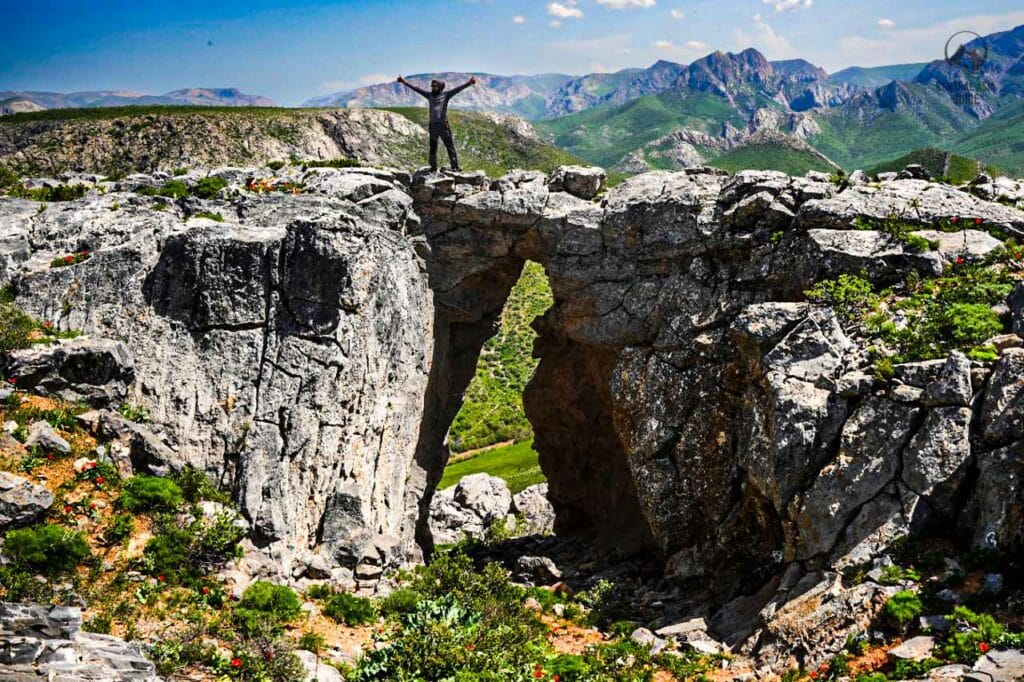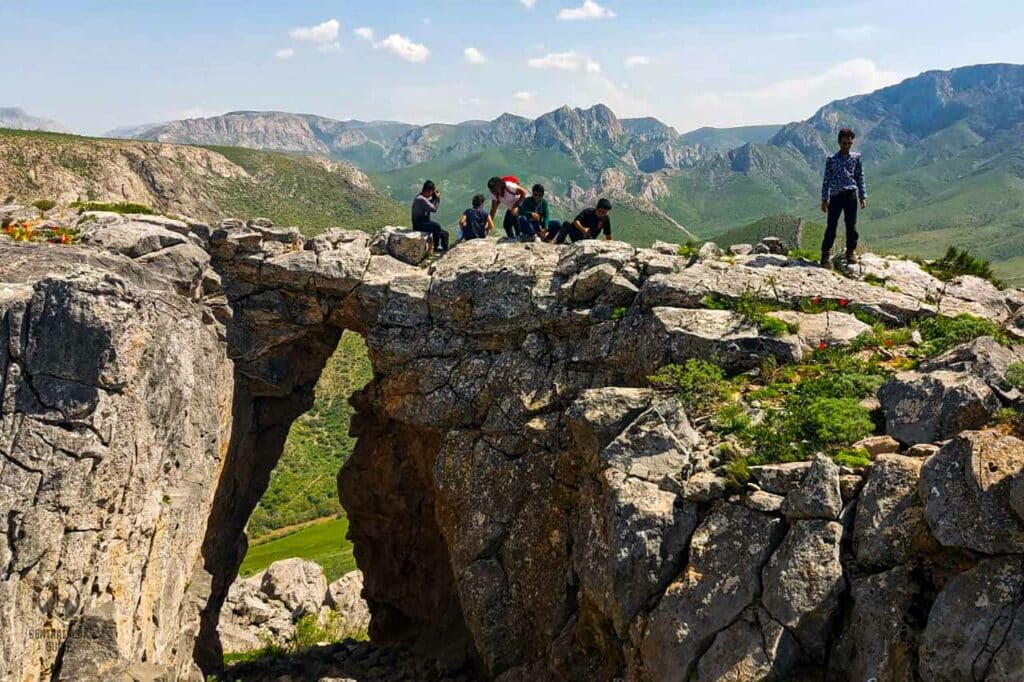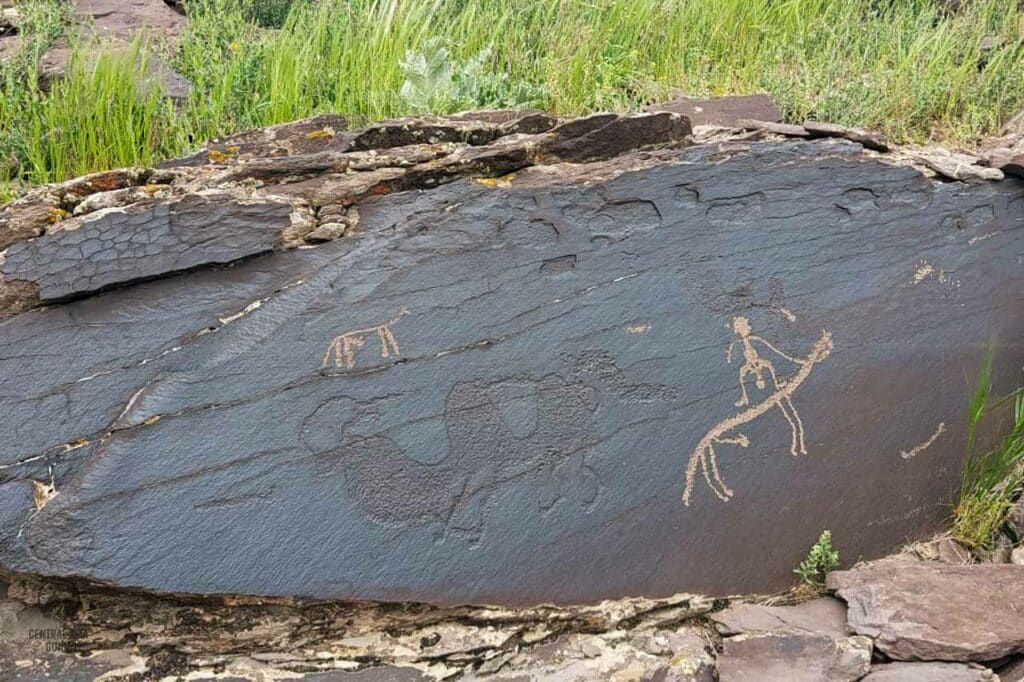Karatau Mountains
Karatau mountain range
The Karatau Mountains, located in southern Kazakhstan, are an extraordinary destination for nature enthusiasts, history lovers, and adventurers alike. Stretching approximately 420 kilometers, this ancient mountain range is part of the western Tien Shan system.
Nestled between the Syr Darya River to the east and the Kyzylkum Desert to the west, the Karatau Mountains stand as a natural and cultural treasure. With peaks like Bessaz, reaching an impressive 2,176 meters, the range offers breathtaking landscapes, fascinating geological formations, and a glimpse into the region’s prehistoric past.


Dating back over 500 million years, the Karatau Mountains are among the oldest mountain ranges in Kazakhstan. Formed during the Paleozoic era, they are a rich repository of geological history. Their limestone and dolomite formations, as well as fossilized remains of ancient marine life, tell the story of a time when the region was submerged under prehistoric seas. These unique geological features make the Karatau Mountains a must-visit destination for those intrigued by Earth’s history.
The Karatau Mountains are a biodiversity hotspot, home to over 1,500 plant species, including several that are endemic to the region. Among the most famous is the Karatau wild tulip (Tulipa karatavica), a rare and vibrant flower that blooms in spring, attracting nature photographers and tourists.
The mountains are also a sanctuary for wildlife such as mountain goats, foxes, wolves, and numerous bird species, including majestic raptors like eagles and vultures.
Cultural and Historical Importance of the Karatau Region
The Karatau Mountains have been a cradle of human civilization for thousands of years. Archaeological evidence suggests that early nomadic tribes inhabited this region, relying on its resources for survival. The mountains are famous for their ancient petroglyphs, rock carvings that depict hunting scenes, animals, and spiritual symbols.
These petroglyphs provide valuable insights into the beliefs and lifestyles of the region’s early inhabitants. Additionally, the mountains were historically part of the Silk Road trade routes, connecting Central Asia to other parts of the world. This rich history adds a layer of intrigue to the natural beauty of the Karatau Mountains.
Today, the Karatau Mountains are a key player in Kazakhstan’s economy and tourism sector. Rich in natural resources, the region boasts significant phosphate deposits, which are mined extensively. However, the mountains are equally important as a destination for eco-tourism. Visitors flock to the Karatau region for hiking, wildflower viewing, and exploring its archaeological sites. In spring, the valleys burst into life with colorful wild tulips, offering a breathtaking spectacle for visitors.
Ak Meshit Cave
Aqmeshit Cave is situated near the Karatau Mountains, and it is one of the country’s most remarkable natural attractions. “Aqmeshit” translates to “White Mosque,” reflecting the cave’s ethereal, white interior that resembles a sacred space.
The cave is massive, with a height of around 20 meters and a width of over 60 meters. Its dome-like ceiling and natural skylight give it a cathedral-like appearance. The natural light streaming through the opening creates a mystical ambiance. The cave is considered a sacred place by locals, who associate it with healing properties and spiritual energy. Visitors often leave offerings or prayers inside.
Karatau Petroglyphs
The Karatau Mountains in southern Kazakhstan are home to an impressive collection of petroglyphs that date back to the 2nd millennium BC and the Middle Ages. These ancient rock paintings are scattered across various gorges in the Karatau region, with notable discoveries in Besaryk Gorge, where the first mentions were made in 1906 by topographer M.N. Kirchhoff.
In the early 1970s, the South Kazakhstan Archaeological Expedition documented numerous petroglyphs from the Kuykeitai rock and the Besaryk Gorge. The expedition studied five petroglyph groups in the Maydamtal Tract, located approximately 30 km from Besaryk. The Karatau petroglyphs are significant because they provide insight into the Bronze Age and Iron Age lifestyles of nomadic tribes in the region. These carvings reflect not only the economic activities but also the religious beliefs, customs, and rituals of the people.

The petroglyphs are mainly located in various tracts of the Karatau region, including Koibagar, Arpaozen, Maydamtal, Ulkentura, Kysan, Zhyngylshak, Koshkarata, and Suyundiksai. These sites are located in the Suzak District of the Turkestan Region and are within the boundaries of the Aksu-Zhabagyly Reserve. The total number of discovered petroglyphs across these areas exceeds 3,000 compositions and individual images. Notably, Arpaozen alone contains about 2,765 petroglyphs.
The petroglyphs are carved on rocks and boulders of various sizes, providing a detailed depiction of the nomadic tribes of the era. The images found in these locations are not only artistic but also serve as a historical record of the daily life, economy, and beliefs of these ancient peoples.
The petroglyphs in the Karatau Mountains portray a wide range of subjects, with a focus on animals, hunting, and warfare. There are numerous carvings of animals such as camels, mountain goats, and birds, which reflect the pastoral lifestyle of the ancient inhabitants. The camel is a recurring symbol, often associated with wealth and strength.
One of the most popular themes in the petroglyphs is the hunting scenes, where mountain goats are shown being pursued by dogs, or birds being captured. These carvings illustrate the hunting techniques and the relationship between humans and animals in the nomadic culture.
Moreover, warrior images with spears and clubs provide evidence of the military culture of the time. Among the most valuable discoveries are the military chariots and freight carts—about 50 images of these vehicles were discovered in the last decade of the 20th century and are considered some of the most important petroglyphs in the Karatau region.
The depiction of chariots in the Karatau Mountains further supports the historical understanding that battles and military confrontations took place in this territory. Similar motifs are also found in the Zhetysu region, with sites such as Tanbala and Esquiolmes showcasing similar carvings.
Karatau Ghost Town
Hidden in the Karatau Mountains near the modern town of Karatau, lies a mysterious and evocative place. The Karatau Ghost Town, a relic of Soviet industrial ambition and abandonment. Once a bustling mining settlement in the mid-20th century, the town was established to support uranium and phosphate mining, part of Kazakhstan’s major role in the USSR’s energy and defence industries.
At its peak, the town housed thousands of workers and their families, with schools, housing blocks, factories, and cultural centres forming a fully functioning Soviet town. The town experienced substantial growth, with its population peaking at nearly 55,000 residents. However, with the collapse of the Soviet Union and the decline of mining activity in the 1990s, the population quickly disappeared. It led to the closure of many enterprises and a mass exodus of inhabitants seeking employment elsewhere.
What remains today is a haunting landscape of empty apartment buildings, decaying infrastructure, rusting industrial machinery, and streets slowly being overtaken by nature. Visiting the Karatau Ghost Town is like stepping into a time capsule. You can still see faded propaganda posters, broken playgrounds, and
Other sights and destinations near Karatau Mountains
Page updated 28.1.2025